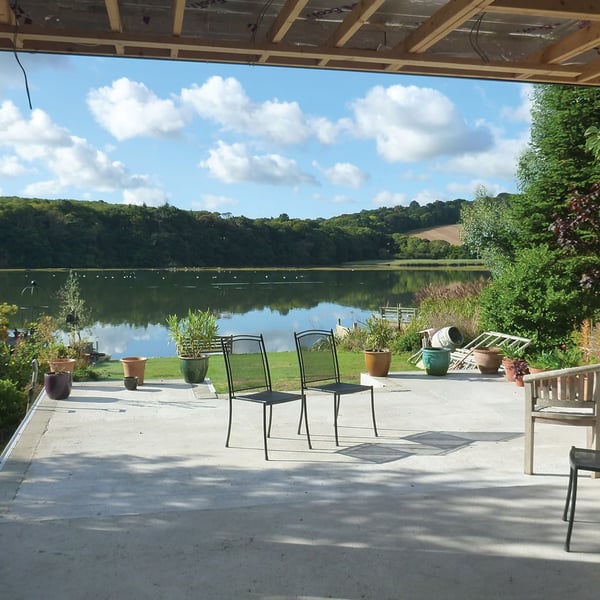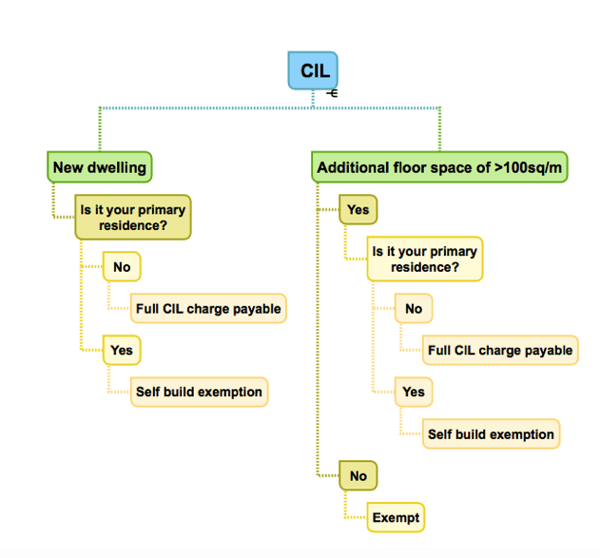The answer to this question is probably yes, in some way. How much will really depend on what type of project you’re doing and where the project is located. In this article we’ll walk you through the basic principals of CIL and look at how it may affect your planning permission.
What is CIL?
CIL stands for Community Infrastructure Levy and was officially introduced in April 2010. Since then, Local planning authorities have had the choice to impose the levy to raise funds from developments' for new infrastructure such as; schools, roads, hospitals and leisure facilities.
Your building project will be liable for CIL if:
- it is a building people are going to use
- it creates a gross additional floor space of 100 square metres or more
- it creates a new dwelling of any size
CIL will be charged per square meter, depending on the location of your project. As an example the rates for Cornwall Council range from £0 - £400 per square metre depending on where in Cornwall the development is taking place. Detailed information regarding the Charging Schedule will be available through your relevant planning authority - Cornwall's can be found here.

How will CIL affect my project?
You should be thinking about CIL at the very beginning of your project as it could have a significant financial impact. We’d recommend discussing it with your design team early on to get their specific knowledge regarding the charges in your local authority area as these can vary dramatically.
Once you have plans ready to be submitted for planning permission there are several stages to the CIL process:
(Please note there are links to relevant documents throughout this section, these are for planning applications in England.)
- All planning permission applications are required to submit a Form 1: CIL Additional Information Form. The information provided on this form should be enough for the planning authority to determine if CIL is liable.
- Form : Assumption of Liability needs to be filled out, ideally at the same time as the rest of the planning application. This sets out who needs pay the CIL charges if the project is liable.
- Once planning permission has been granted the planning authority will issue a Liability Notice to all liable parties. This will set out how much CIL is payable.
- Before any building work starts on your site a Form 6: Commencement Notice needs to be submitted. This information will enable the planning authority to calculate when the CIL payments are due.
- Following receipt of Form 6: Commencement Notice the planning authority will issue a Demand Notice to each liable party. This will set out the amount of CIL payable, payment options and due dates.
It is also worth mentioning that CIL can apply to certain proposals allowed under Permitted Development. So even if you don't require planning permission CIL charges may still apply if the proposal meets the criteria for liable developments. If this applies to you it’s worth checking with the relevant planning authority about which forms need to be submitted.

CIL relief
If your building project is liable for CIL you may still be able to apply for relief or exemption. Relief or exemptions aren’t automatically applied so it’s important that all relevant forms are completed.
Projects that may be eligible for relief or exemption include:
- self builds including new dwellings, residential extensions and annexes
- social housing
- charitable projects
- or in exceptional circumstances
Self-builds are the most relevant exemption category for our clients and may very well apply to your project. `Self Build' for the purposes of CIL exemption is defined as all homes built or commissioned by individuals or groups of individuals for their own use, either by building the home on their own or working with builders. This is likely to apply to you if you’re doing work to your current home or about to embark on a new build to live in yourself.
You must also occupy the building as your principal residence for a minimum of three years after the work is complete. So if you’re looking to do the work, and then move on, this maybe an important consideration.
There is (of course!) more paperwork to fill out if you’re applying for self-build exemption. The forms vary depending on whether you’re constructing a new dwelling, extension or annexe and they must be submitted and approved by the planning authority before work commences on site.
Need help with CIL or have questions about how we can help manage the process? Get in touch.



